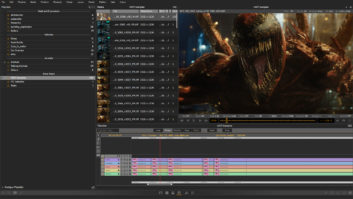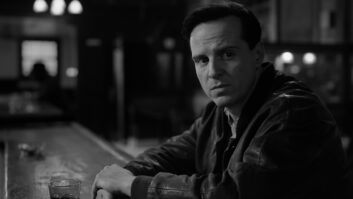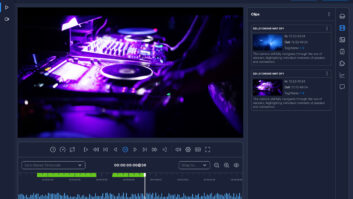
Broadcast trainer, Christina Fox (www.urbanfox.tv), reviews The AF100 Book, by Barry Green.
Barry Green, author of The AF100 Book, is an Emmy award-winning producer, who now writes and produces corporate and industrial films, commercials, screenplays and films. Many Panasonic camera owners know him as partner and moderator at www.DVXuser.com a popular and lively forum for content creators. I have seen Barry in action at a press launch for the AF100/AF101 at IBC2010 where he was an energetic advocate for the camera. He has previously written several books on Panasonic cameras and his enthusiasm for the brand starts from page one.
The first chapter is written as a series of articles for the beginner. He explains simply and clearly, focusing, exposure and white balance, which then leads on to depth of field, modes of shooting, lens mounts and adapters, crop factor and synchronising timecode. These first 98 pages are a good introduction to practically any camera – they are the topics the manufacturers always leave out of the manuals because they assume every knows this stuff already.
The more experienced cameraman could probably start from page 109, which starts the next chapter on Scene File settings. There are quite a few parameters that can be changed in the Scene Files from Detail Coring to knee and matrix. Barry takes you through each one. First he explains what it does and then what effect you should see as you change it and, importantly, why you would want to change it from the factory settings. There are before and after images to accompany most of these explanations, but sometimes the printed screen grabs don’t look widely different. Luckily Barry realised that a printed thumbnail is not enough. So, all the images are saved in high quality on the accompanying CD as 5.9MB .bmp files.
Most of the rest of the book is about the buttons and switches you’ll find on the camera, what you’ll see displayed in the LCD and viewfinder, audio functions and timecode options. There are also sections on metadata, dividing it into the data the camera generates automatically and what operators can add themselves.
At the start Barry writes: “This guidebook will occasionally refer back to the camcorder’s Owner’s Manual since subjects adequately covered there will not be repeated here.” The camera’s menu structure and options are not covered in the book, so you still need the manual.
The CD that accompanies the book has a readme file and three folders. The first folder contains all the before and after images from the scene chapter, which was very useful. The next directory has frame grabs showing scene file looks explained in the book. Then the final folder has four scene file .TXT docs that you can save to an SD card and import into your own camera. I’m sure it won’t be long before you can download others from the internet.
If I have a criticism of the book it is of the editing and layout. On one page he refers to 3200K, 3200 K, 3200 Kelvin and 3200 degrees Kelvin. A good editor would have ensured some consistency on the page as well as throughout the rest of the book. Plus, (and this is a hobbyhorse of mine) it is not correct to say “degrees Kelvin”.
The chapter numbering is very odd. Chapter one is actually flagged as 18, which counts down to the end of the book so that the last chapter is numbered chapter one. I think this counting down is meant to represent a film leader countdown and once you get to the end you are meant to start filming. Indeed, there is a strong film theme in the design, with film strip images and sprocket holes appearing on the front and back covers and throughout the book. Yes, the camera can do 24p and a shallow DoF but it records to an SD card not film. But I suppose an SD card isn’t as sexy on the cover. My final gripe is the blue dotted background on the main pages, which I found distracting to read over.
There are two types of people – those who read manuals and those who don’t. Which is a shame because reading the manual helps to prevent a lot of guesswork and hair pulling. The trouble with manuals is that they are usually very badly written and assume the reader already has a degree of knowledge. Sometimes a potentially good manual gets lost in translation and you wonder if this is some dialect of English you hadn’t previously encountered.
The book does seem very expensive at £65 and that will deter some people from buying it. This would be a shame because this is a good book – which is probably why Panasonic distributor, Holdan has decided to include it with the camera if you buy its AF101 kit, which is great for those who buy one, but anyone who might hire the camera or be brought in to use one would probably find it useful too. Overall, it is well written and full of useful information for the beginner with an easy to read style for those who hate to read the manufacturer’s manual.
The Holdan AG-AF101 Kit Promotion includes the camera, a Panasonic SC-200K carry case, IDX high-power battery, and the book, and lists at £4,250 (+VAT), saving almost £200 on unbundled prices, and is mainly being offered by its dealers in the UK, Ireland, the BeNeLux countries and Scandinavia.






